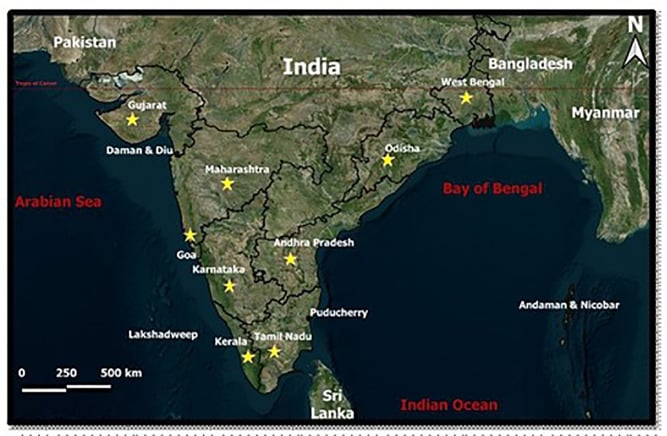India Strengthens Marine Fisheries Policy Amid Pollution Crisis

The Government of India is taking significant steps to enhance its marine fisheries policy, focusing on conservation and sustainable practices. The National Policy on Marine Fisheries, established in 2017, outlines strategies to combat marine pollution, particularly from plastics and abandoned fishing gear. As part of its commitment, India is actively participating in global initiatives to reduce marine plastic litter and is implementing various measures to ensure the long-term viability of its fisheries sector.
Combatting Marine Plastic Pollution
The Department of Fisheries in India is at the forefront of efforts to tackle marine plastic pollution, particularly from the fishing and maritime sectors. Engaging in international collaborations like the Glolitter Partnership Project and the Reglitter Project, India aims to mitigate the impact of marine plastic litter (MPL) originating from sea-based sources. These projects specifically target abandoned, lost, or discarded fishing gear (ALDFG) and waste from ships. As a Lead Partnering Country in the Glolitter Project, India has developed a National Action Plan (NAP) that outlines strategic measures to reduce MPL. Additionally, the government has prohibited destructive fishing practices, including pair trawling and the use of artificial lights in the Exclusive Economic Zone (EEZ), to protect marine ecosystems.
Promoting Sustainable Fishing Practices
To ensure the sustainability of its fisheries, the Indian government is collaborating with state governments and environmental agencies. Key initiatives include the establishment of artificial reefs along the coastline, sea ranching, and the promotion of seaweed farming. The government has also implemented a uniform fishing ban for 61 days during the major fish breeding season and introduced Turtle Excluder Devices (TEDs) in trawl nets to protect turtle populations. Furthermore, advisories have been issued to states and Union Territories to enforce regulations on juvenile fishing, including mesh size regulations and minimum legal sizes for fish, under their Marine Fishing Regulation Acts (MFRAs). These measures aim to foster responsible fishing practices and protect marine biodiversity.
Enhancing Economic Resilience for Coastal Communities
Under the Pradhan Mantri Matsya Sampada Yojana (PMMSY), the government is working to bolster the economic resilience of coastal communities affected by climate change. The initiative has identified 100 coastal fishermen villages as Climate Resilient Coastal Fishermen Villages (CRCFV), focusing on need-based facilities such as fish processing centers, markets, and cold storage. The government is also promoting climate-resilient livelihoods, including aquaculture and mariculture of seaweed and various fish species. Research and technology development in inland and marine aquaculture are being supported by the Indian Council of Agricultural Research (ICAR) to enhance productivity and sustainability in the sector.
Strengthening Regulatory Frameworks and Market Access
The regulatory framework governing marine fisheries in India includes the Maritime Zones of India Act and various Marine Fishing Regulation Acts aimed at preventing illegal, unreported, and unregulated (IUU) fishing. The implementation of the ReALCraft portal facilitates the registration and licensing of fishing vessels, while biometric identity cards for fishers enhance monitoring and compliance. The Fishery Survey of India (FSI) is conducting awareness programs to educate fishers about responsible fishing practices. Additionally, the PMMSY has invested in fish transportation facilities and established e-platforms for fish marketing, ensuring fair prices and better market access for fishermen. A Memorandum of Understanding with the Open Network for Digital Commerce (ONDC) aims to empower stakeholders in the fisheries sector through a digital marketplace.
Observer Voice is the one stop site for National, International news, Sports, Editor’s Choice, Art/culture contents, Quotes and much more. We also cover historical contents. Historical contents includes World History, Indian History, and what happened today. The website also covers Entertainment across the India and World.

